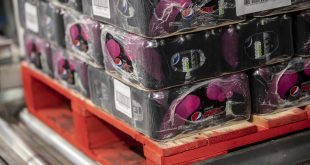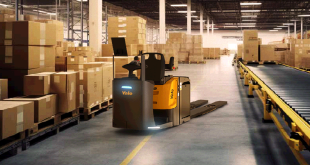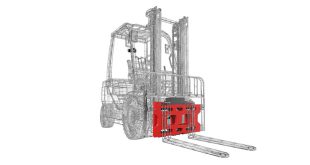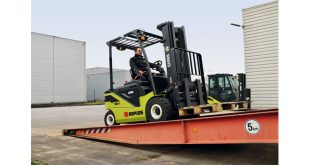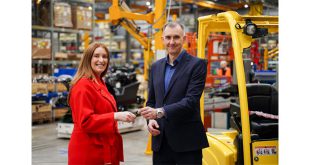When high lift VNA forklift trucks were first developed in the 1960s, the operator remained at ground level and used images relayed to a black and white cathode-ray TV monitor placed within his to view the highest loads. But the quality of the image transmitted to the TV screen was often of insufficient quality to allow safe and efficient high level pallet positioning to be undertaken. The problem was that the cathode ray tube screens used at the time and the limited broad quality made it virtually impossible for a clear picture to be transmitted to the screen.
In addition, cathode ray tube TV monitors were susceptible to the vibrations of the truck. Truck manufacturers attempted to overcome these difficulties by installing military hardware monitors but this proved expensive and, in many cases, did not bring about a real improvement in picture quality.
Partly as a result of these visibility problems, the man-up VNA machine was born. The early man-up machines were viewed as a significant development in materials handling because they not only allowed full pallet loads to be put away and retrieved at heights of up to 12 metres but, because the operator was raised on a platform, they potentially allowed high level order picking to be undertaken by a single machine.
At around the same time as the man-up machine was evolving, data capture and barcode technology emerged. The ability to scan picked items and receive picking instructions from warehouse management systems at height has only added to the perceived efficiency of man-up Combi VNA trucks.
However, these days it is widely accepted that there are significant drawbacks to having a man order picking some way above the ground. For example, because man-up Combi VNA trucks are physically big pieces of kit, storage schemes have to incorporate large gangways at both ends of each aisle to allow the trucks to switch aisles. This often means that the space savings achieved by the man-up machine’s ability to operate in impressively narrow aisles can be lost. Furthermore, there are safety issues associated with picking because, quite simply, reaching out from a fixed cab to a pick carton placed on pallet some distance away is not ergonomic or efficient and a man-up Combi VNA truck operator who is working 10 metres in the air, will often struggle to notice another order picker working at ground level in the same aisle – thereby compromising order picking efficiency and health and safety within sites where there is a high degree of low level order picking.
In short, what had – in the early days of the man-up VNA truck – been seen as the truck’s key advantages are now considered handicaps by many logistics experts. In fact, elevating an operator several metres into the air to pick single items often with large travel distances between picking locations can now be demonstrated to be uneconomical on a cost per pick basis for all but those applications where the most high value items are stored.
In a lot of cases, high lift articulated forklift trucks have replaced VNA man-up machines. Articulated trucks can now be supplied with the same fixed mast tilting carriage technology as high lift trucks and this – combined with the huge advances in operator vision system technology based on HD LCD TV that enable a crystal clear picture of the highest pallets to be transmitted to the operator’s in-cab screen – enables pallets to be picked and put-away up to 12 metres high while permitting first and second level order picking to be carried out safely and efficiently within the same aisle.
Developments in powered mobile racking have also helped to make the case for the articulated forklift a compelling one. For example, Narrow Aisle has recently provided articulated trucks to a third party cold store operator where the combination of powered mobile racking and Flexi trucks has allowed 6200 pallet locations to be provided. Tests showed that the use of static narrow aisle pallet racks and traditional VNA machines at the same site would have restricted the facility’s capacity to 5000 pallets.
The face of order picking in the warehouse is changing and higher throughputs, greater picking accuracy and increased emphasis on ground and first level picking are now the key goals for many developments. As a result, the type of materials handling equipment used within the modern order picking environment is changing too – which may be good news for warehouse staff who don’t like heights.
www.flexi.co.uk
 MHW Magazine News and stories from the Materials Handling Industry
MHW Magazine News and stories from the Materials Handling Industry


















